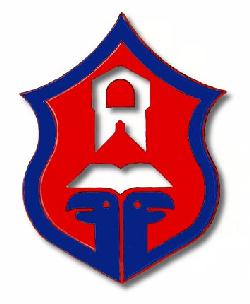Cetinje: Difference between revisions
Knorrepoes (talk | contribs) m (Text replacement - "====Official blazon====" to "===Official blazon===") |
Knorrepoes (talk | contribs) m (Text replacement - "====Origin/meaning====" to "===Origin/meaning===") |
||
| Line 11: | Line 11: | ||
===Official blazon=== | ===Official blazon=== | ||
===Origin/meaning=== | |||
The left arms show a stylised blue eagle with two heads symbolising the Montenegrin eagle, the blue border is actually made from the wings of the eagle. | The left arms show a stylised blue eagle with two heads symbolising the Montenegrin eagle, the blue border is actually made from the wings of the eagle. | ||
Revision as of 18:29, 22 June 2017
| Heraldry of the World Civic heraldry of Montenegro |
CETINJE (Цетиње)
Official blazon
Origin/meaning
The left arms show a stylised blue eagle with two heads symbolising the Montenegrin eagle, the blue border is actually made from the wings of the eagle.
The eagle surrounds an open book, called OKTOIH PETOGLASNIK, the first printed book in South Slavs. It was printed in 1494.
Above the book is the monastery of Cetinje, center of the Serbian Orthodox Church in Montenegro.
The previous arms, used in the early 20th century, show the Monastery of Cetinje as it looked previously.
On the top of the hill is the "Tablja", the place where Turkish heads were shown during the longtime struggle against the Ottoman Empire.
Contact and Support
Partners:
Your logo here ?
Contact us
© since 1995, Heraldry of the World, Ralf Hartemink 
Index of the site
Literature : Image send to me by Dragomir Acovic (acovic@EUnet.yu), information provided by Milos Milosevic - Laki (montenegrino7@yahoo.com)












